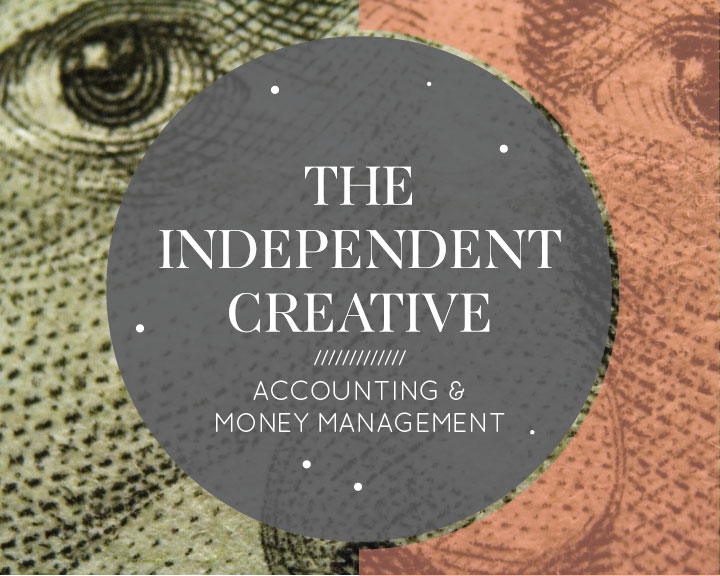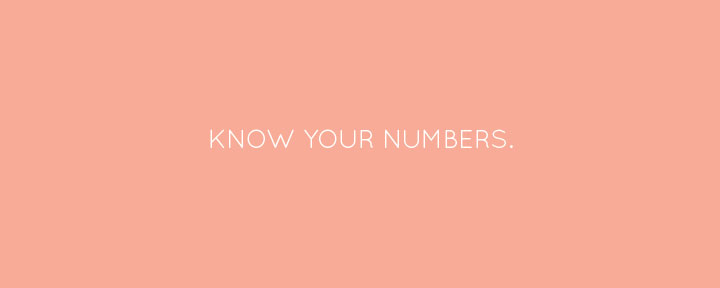In continuing my “The Independent Creative” series (a series about my journey of becoming my own boss), I knew I’d have to address the not-always-exciting topic of accounting. While it’s not very exciting to talk about, it should be one of the easiest parts of your business to manage once you have a solid plan in place. I will preface this all by saying, I have not been trained as a CPA/accountant/bookkeeper/etc … that’s why I pay one!! This is what I’ve learned & how I implement it into my business and get the best tips to run a small business.
If you’re providing a service or product to clients in exchange for money, you are a business … you should be registered as one … and you should be filing taxes accordingly.
Becoming a legal business: As soon as we landed in Portland, we were connected with our amazing lawyer. He specializes in working with creatives, and he knew exactly what needed to be done to ensure we were recognized as a legal, legitimate business in Oregon (and in the US). Our paperwork was filed within a day, and within a week, we were officially a tax-paying business. From here, it gave us the opportunity to open a business bank account, and we were protecting our personal assets by keeping work & personal completely separate. Again, if you’re selling or product or service, please please please talk with a lawyer to see if you’re following the laws as far as establishing your service/product as a business.
Keep Your Money Separated: I cannot stress enough how important it is to keep your personal money & business money completely separated. Once you have your business established (ours is an LLC), you can open your business bank accounts (savings & checking are both great to have). Any and all money that comes into you as payment for goods or services must be deposited into your business account. From there, it’s up to you to decide how much money is allocated towards what (more on that in a bit)…
Hire a CPA: When in doubt about numbers or rules, it’s amazing to have a CPA you can call … and at tax time, they are a godsend. Do it!
Remember when I said this should be one of the easiest parts of managing your business? I meant it. By staying organized, you’re really only setting yourself up for success! If you can’t count on yourself, hire a CPA that will manage your documents, expenses, etc. for you.
Accounting Software: If I could give a big, sloppy kiss to FreshBooks, I totally would. We use them for everything related to money & our business: invoicing, time tracking, expenses, and client profiles. I can go into the reports section at any time to see what my profits/loss statements are looking like, how much money my clients owe, and if I’ve been paid that week.
I love that it’s all online, and that I can really customize the settings so my clients don’t feel like they’re getting messages from a robot. It costs about $400 per year, but I promise it’s TOTALLY worth it. They have less expensive plans as well. At the end of the year, all of your reports (income, expenses, etc.) can be exported into nice PDF’s for tax purposes.
You can check over here for other useful accounting software that you can consider. Get help with implementing and optimizing the right software solution for your business. Also when looking for more on business finance, you might want to see here the last post where you will learn whether or not is equity release a good idea.
Online Banking: I think this is a given, but being able to manage your bank accounts online is a blessing. My favorite feature is the transfers module. This means I only have to deposit money into our main business checking account. From there, once I’m home, I can disperse the money how I like.
Save Your Receipts: Every time you buy anything related to your business, you should be keeping track. Everything (well, almost everything) is a deductible expense. I keep all receipts from stores in a separate wallet in my purse. At the end of the month, I enter them into FreshBooks before filing them. With online purchases, I enter the expense into FreshBooks as soon as I receive my receipt via email, then file the email in my ‘2012 Receipts’ folder in my mail program. I don’t print these, but I do keep that copy on my computer (and back it up). That’s it. It’s such a simple way to keep track of expenses.
Establish a Workflow: I follow the exact same steps for every single contract that crosses my desk. I’ll do a full post on this later, but this was one of the best systems I created for my business. It keeps me on task, and ensures I don’t miss payments from clients, and that I’m delivering everything on time.
Keep Your Emails Organized: Every client has a folder in my inbox. After we talk, I file it. I use the same thread for the entire project, and I encourage them to do the same. If there’s ever a question about anything, I know where to look, quickly, for the answer. I use Google Apps/Gmail … and MacMail to organize & access it.
Knowing how much to save can be a little tricky. That’s why hiring a CPA is essential … there won’t be surprises at the end of the year.
The Magic Ratio: I follow the exact same steps for every single check that comes into the studio … it’s easier this way, and I know that at the end of the year (or when quarterly taxes are due), I’ll have my money allocated the right way. My magic ratio is 65/5/25/5. This represents the amount I get to keep, and how much I need to save. If I receive a $2,000 check, the entire check is deposited into our business bank account, then divided like this: $1,300 is transferred to our personal checking (65%), $100 is transferred into personal savings (5%), $500 is transferred to the business savings account for taxes (25%), and the remaining $100 stays in the business checking (5%). If there are expenses related to that client/payment, I subtract the expenses from the total before doing my ratio, and leave that money in the business checking account.
How Much You Really Make: Once you have your ratio in place, you’ll be sad every time you realize you’re not able to keep all of the money you earn. It happens to me almost daily! But, it just meant I had to put those big numbers aside and focus on how much I actually needed to bring in each money to pay our bills. Let’s say I wanted to clear $5,000 a month for personal expenses. This means I would need to be bringing about $7,500 a month into the business. Remember, you just have to forget about that $7,500, as about 30% belongs to the government. BUT, that $7,500 is important for pricing. If you’re a photographer who charges $3,000 per wedding, you know you’ll need to book 2 weddings per month & a few photo sessions. For me, I know I need to book x number of clients per month, and I know my profit from each project must clear my magical number. This is especially useful when I connect with an amazing client who wants to build a custom package with me … I know what I need to profit from the project, so I can be flexible as long as my number is met. Without knowing how much I was making or needing to make in a month, it would be harder to be flexible.
Establish Goals: If you know you have a big purchase coming up, it’s relatively easy to save … I promise it feels better this way. If your new piece of equipment costs $1,000, then reserve an additional $100 from your next 10 checks … keep that money in your business checking. Then, once you have that $1,000, you can go get what you’ve been saving for. I created a simple word document that looks like this (then printed it & kept it on my desk):
SAVE $2,000
- Date: _______________ :: $200 into business checking!
- Date: _______________ :: $200 into business checking!
- Date: _______________ :: $200 into business checking!
- Date: _______________ :: $200 into business checking!
I repeated that until it was enough to save $2,000 (a number I was working towards for some new equipment). It was super-fun (seriously, it was fun) to keep track of my savings, and by choosing to take $200 extra from each check, it went quickly … and painlessly. Without establishing this plan, I wouldn’t have held myself accountable, and I’d still be on that first goal.
Always Have Goals: Once we reached that goal for our business, we set a new goal of a larger amount in our personal savings. It’s basically the same plan, the numbers are just a little different. It’s really fun to be like, “Whoa! We saved an extra $x.xx this week!” … We’re still not sure what we’re going to do when we reach the big goal, but I imagine it’ll involve a cold drink, and possibly a little paper umbrella. No matter the goal, it just feels good to have something you’re working towards!
I feel like there’s so much more I could discuss on this topic. Specifically with finding out how to price your goods & services!! What do you find most helpful when it comes to your accounting workflow? Were there things you never expected? Was it easier or harder than you thought it would be? I can’t wait to hear about it! Be sure to leave a note in the comments.






